Matt Dillon at 60: ‘Some doors close because you get older, but others open. You can’t replicate life experience’
A talented actor, discreet man of calm spirit, Dillon stars in ‘Haunted Heart,’ the latest from Spanish director Fernando Trueba. The Oscar-nominated star is an example of how character is worth more than the fear of being typecast
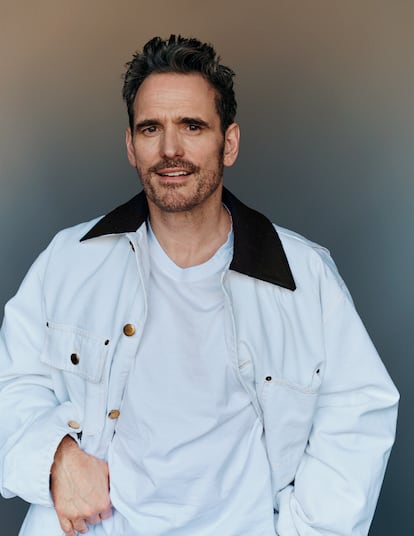
“Don’t go there,” warns Matt Dillon, when we ask about his age. He’s only joking, because, over the course of more than an hour-long conversation with EL PAÍS — on a May day in the bar of a Paris hotel — at least two things will become clear. The first is that Dillon — who was a teen idol in the 1980s and an attractive grunge figure in the 1990s — has embraced his 60 years without hangups.
“Some doors close because you get older, but others open,” he shrugs. “One of the things that I’ve discovered, as we get older, is that we can handle complexity more and how to read situations, complex situations. Because we’ve lived! You can’t replicate life experience.”
The second thing that’s clear is that his quota for vanity (something not in short supply in Hollywood) was more than filled back in 1983. That year, when he was a teenager, he was in two now-classic films by Francis Ford Coppola: The Outsiders and Rumble Fish. Because of those performances, he was pigeonholed as a certain type of actor, a kind of James Dean of the 1980s, who was handsome, tough and explosive, but with a vulnerable side. It hasn’t been easy for him to escape that image.
Today, however — with many successes and failures under his belt — there’s no need to deceive himself. He’s a Hollywood veteran who has never won an Oscar, although, in 2005, he was nominated in the Best Supporting Actor category for Crash, directed by Paul Haggis. He can say, with a half-smile, that “nobody really knows who I am.”
“The fear of all actors,” he confesses, “is that we’ll be typecast. Nobody wants to be typecast. But inevitably, everyone’s typecast.”
Question. This is what has happened to you, isn’t it? You became known as the tough guy…
A. They tried. But then, I worked outside of that. Of course, even a great actor like Robert De Niro or Al Pacino or Gene Hackman gets typecast.
Q. Or Humphrey Bogart.
A. Humphrey Bogart, yes! We all want to be told that we’re versatile… but not even Marlon Brando could escape being Marlon Brando.
What’s disconcerting about Matt Dillon is that, in person, he has the same mannerisms for which he’s known for. He also has the same deep, monotone, raspy voice that can be heard in his movies. To paraphrase him: not even Matt Dillon can escape being Matt Dillon.

Precisely, the actor has just premiered in Being Maria — directed by Jessica Palud — where he plays none other than Marlon Brando. It’s about the filming of Last Tango in Paris (1972), when Bernardo Bertolucci directed Brando and Maria Schneider. And, in Haunted Heart — directed by Spanish filmmaker Fernando Trueba — he plays, yet again, a turbulent man with a mysterious past.
So, is Matt Dillon a typecast actor? EL PAÍS asked Trueba this question over the phone. “I think the great actors are always themselves,” the Spaniard responds. “You love them for their personality, for what they radiate. That an actor has to dress up as 17 [different personas] seems like nonsense to me. What happens is that there are people who say that, just as there are actors who believe that they have to change themselves completely. Everyone has their own beliefs… but Matt Dillon has done pretty different things. His role in Drugstore Cowboy [1989] has nothing to do with what he did with [director] Lars von Trier [The House That Jack Built, 2018], or with me, or in Rumble Fish.”
In Paris, during his interview with EL PAÍS, the actor orders a double espresso and a juice. He says that he needs to take care of his cold. He’s just arrived from Cannes: perhaps he got sick there, he muses. Maybe on a boat ride, or because he was in contact with so many people at the film festival. In a few days, he’ll go to Rome to see some friends. He has one foot in New York and one in Europe, living between the two continents and working on both. His voice sounds deeper than usual.
At the end of the interview, a hotel manager will accompany him to the pharmacy. And, at that moment — in the heart of Paris — perhaps it’s true that, as he says, no one knows who he is. He seems to go unnoticed in the streets near the Opera and Place Vendôme. Of course, it’s also true that Parisians aren’t given to staring at celebrities. Or, at least, they don’t do so in such an obvious manner…
Haunted Heart is a Patricia Highsmith-style thriller, set in a remote corner of Greece. Dillon explains that he connected with Trueba years ago, thanks to their shared love of jazz and Cuban music. They met by chance in a restaurant in Los Angeles, about 20 years ago. Trueba had just had dinner with Santiago Segura, Penélope Cruz and Tom Cruise. As Cruz and Cruise were leaving, Dillon came in with a friend. After a while, the director and actor started up a conversation. One day, Dillon recalls, the idea of making a movie came up: “We said, ‘We should do something together.’ And he answered me: ‘I have something.’ And he sent me this magnificent script, which is both romantic and dark.”
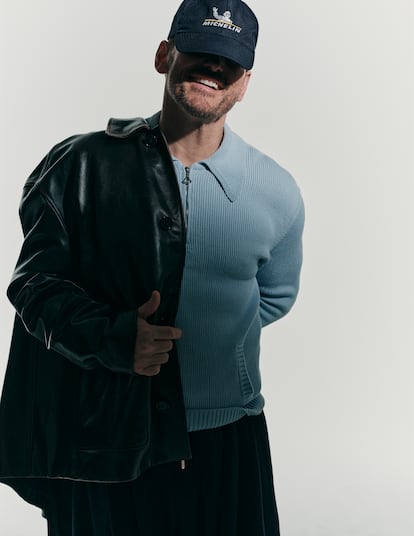

Dillon — who directed a documentary dedicated to the Cuban musician Francisco Fellove — “is a scholar of Cuban music,” Trueba gushes. “You cannot imagine to what extent. I talk to him and tell him: ‘I don’t know who you’re talking about.’ He knows the guy who played the tres [a three-course chordophone] with such-and-such [musician] in 1944. You go to his house in New York and he has a room dedicated to his Cuban music collection. It’s a museum. And he plays the congas.”
Dillon is also a painter. During the filming of Haunted Heart, he demonstrated this: one of his paintings is seen at one point in the film. And the Spanish director adds that — while he’s speaking with EL PAÍS over the phone — he has before him a drawing of the philosopher Jean-Paul Sartre done by Dillon.
In Haunted Heart, there’s a man, a woman and a huis-clos (a Sartrean term, describing a closed space shrouded in mystery). It’s a story that could seem like a romantic comedy with good food and good music in the first hour, before taking a Highsmithian — or Hitchcockian — turn. “It was like filming a classic movie. But that’s what Fernando’s all about. In addition to being a great filmmaker, he’s a great storyteller and, on top of that, a film historian, so it’s amazing to talk to him. He had professional relationships with some of the great filmmakers, especially a lot of the older American guys, people like Sam Peckinpaw,” the actor details.
The other protagonist of the film is Spanish actress Aida Folch, the woman who arrives on the Greek island to work in the restaurant managed by Dillon’s character. “There are people who have a kind of power. Aida Folch is one of them. She has this intensity in front of the camera,” says Dillon.
“I wanted an actor who was attractive, who was one of those guys who had that romantic heartthrob thing, but with a disturbing side, someone who could even be scary,” Trueba explains. “And, suddenly, I said to myself, ‘No one does this for me better than Matt Dillon.’ He clearly had both elements. And then, he had his sense of humor, something I saw in There’s Something About Mary [1998]. He was capable of being funny. I called him and, since we already knew each other, it was easier.”

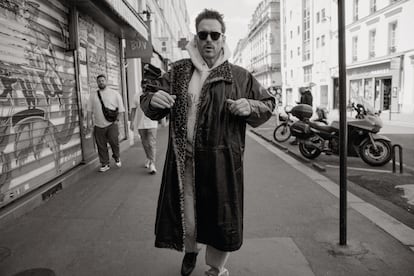
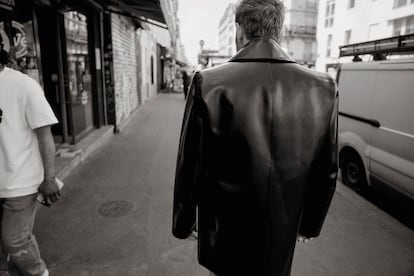
In Paris, EL PAÍS asked Dillon if, like the protagonist of Haunted Heart, he also has a place at the end of the world, somewhere that he’d like to escape to and leave everything behind. “I think it’s human nature to build these castles in our mind,” he reflects. “Some utopian kind of place.” He then explains how, after directing City of Ghosts (2002) in Cambodia, he fantasized about going to live in Laos, in a colonial-era mountain town. In the end, he didn’t. “You can’t run away from who you are,” he shrugs.
Dillon is someone who’s been in the spotlight since he was a teenager. He eventually developed a career as an adult with ups and downs, never reaching the status of other colleagues from his legendary generation, such as Tom Cruise. It’s been difficult for him to escape from his image.
“I’m not someone who has gone looking for the spotlight,” he says. “It’s true, I’m here now, doing an interview with you. I promote myself when necessary — it’s part of the profession — but still, I’ve led a simple life. I don’t hide from anything. I go out, I see people, I don’t isolate myself. Truth be told: I didn’t become an actor out of narcissism or extroversion. Many people become actors because they want to perform, but for me, the important thing about being an actor was to transmit something, to reflect something about human nature to the audience. I was more curious about human nature and the world than about acting. I like to perform, of course… but my thing really grows out of a curiosity. For me, it wasn’t about fame.”

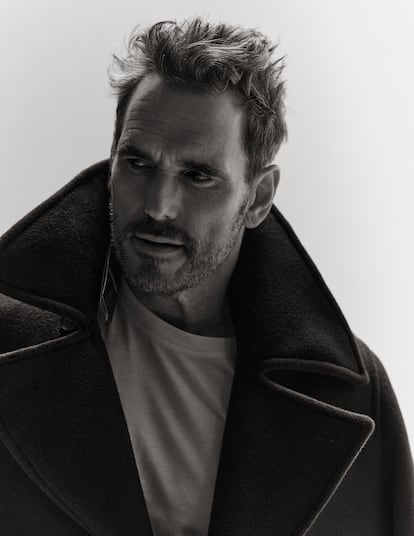
Today, Dillon watches those early films and they give him a strange feeling: “It’s like looking at photos of yourself when you were younger. I love it, making them was important in my career and working with Francis [Ford Coppola] was a big deal. He treated me so well and gave me a kind of confidence.”
Since Matt Dillon considers his friend to be a “historian” of cinema, EL PAÍS asks Fernando Trueba to place the actor in the timeline of Hollywood. “Being a performer from the generation that began with The Outsiders, I think he’s something of a classic actor, in the vein of [Robert] Mitchum. Someone who fits into a more classic type of cinema. I like that,” Trueba opines. “He wasn’t a modern [performer] at the time he debuted. He could have easily been a Western actor. He’s deeply American in the way he speaks, in the way he moves. Nowadays, the Western genre practically no longer exists, except in isolated cases. But he would have been a perfect actor in that genre. He’s also, of course, [part of] film noir, he’s done that quite a bit.”
“I always want to work with great filmmakers and I don’t always have the opportunity,” Dillon notes. He talks positively about The House That Jack Built (2018), a film by Lars Von Trier that seemed tailor-made for his success. In the movie, he played a man who was more than unstable: he was demonic. “I wanted to work with Von Trier… not because I was interested in serial killers, but because I really wanted to work with him. I had a feeling I would learn something with him and that I would be able to do things in a very free way. It was a leap of faith. [And the film] was a real meditation on evil.”
“I was intrigued by how Trier worked.” Dillon adds. “In the film, we never rehearsed. Not one time. There was a freedom similar to what you have in the theater: the scene belongs to the actor.”
You would think that, after so many years in the profession, he would have lost his enthusiasm. When asked about this, he responds: ”as a professional, my job is to deliver a performance.” He remembers a piece of advice that veteran actor Bruce Dern gave him, when he worked with him in the 1980s: “Go to the set and work without preparing. And something magical will happen.” “But he also said that he always liked to prepare! I always come prepared,” he clarifies.
“I remember those words. They were part of my training. Working with older actors was vital for me,” Dillon reflects. “It wasn’t always the best movie, but the actors I learned from — like Gene Hackman or Bruce Dern — gave me great advice.”
“I started acting at a very young age, which makes me understand what Maria Schneider went through. I know that feeling of not being respected at all,” he tells EL PAÍS, pointing out that she debuted when she was only 15-years-old. “But I can’t talk about her experience — which was very extreme — because she was betrayed by the people she worked with.”
Maria Schneider’s experiences are portrayed in the film Being Maria (2024), including the traps that Bernardo Bertolucci and Marlon Brando set for the young 19-year-old actress during the filming of Last Tango in Paris. There was an infamous scene in the movie, in which Brando’s character sodomized Schneider. The director and lead actor hid from her the details of what she was going to shoot. The abuse resulted in trauma.
Dillon’s history with Brando goes back a long way. When he shot his first film in 1979 — Over the Edge — the director, Jonathan Kaplan, jokingly called him Marlon. “The reason was that I wanted everything to look real. If a window had to be broken, I really wanted to break it. ‘Marlon!’ is what the director called me. [At the time], I didn’t know who Brando was. All I knew was that [he starred in] The Godfather, but that was it. Of course, later, when I decided to continue being an actor, Brando was a big part of my education.”
With Fernando Trueba, he has often spoken and disagreed about Marlon Brando, who died in 2004. According to the filmmaker, “Brando is an actor whose work you always see: you see the elaboration, you see the process and you say: ‘How tiring!’ There are people who insult me for saying these things... but the more the years go by, the less I like [his acting style].” And what does Dillon say when he hears Trueba’s opinions? “He laughs at my nonsense,” the filmmaker chuckles.
When Matt Dillon was offered to play Brando in Being Maria, he couldn’t resist. “I like challenges. [And] Brando wasn’t a sadist,” he claims. “He was looking for authenticity wherever he could and, unfortunately, they [Brando and Bertolucci] miscalculated, because it was a mistake not to inform [Schneider] of what they wanted to do. I speak of miscalculation not to diminish the importance of what happened, but because we — actors and filmmakers — sometimes don’t want to know what the other person is going to do, in order to obtain an authentic reaction. But it was a mistake to do it with a scene of such a sensitive nature.”
Dillon remembers when he studied at Lee Strasberg’s acting school. At the time, his role models were Montgomery Clift, James Dean and Brando himself. It was the latter who had the most impact on him: “He changed the way we looked at the American man. He — more than the others — had a heartbreaking strength… a mixture of strength and vulnerability.”
And what about him? What kind of masculinity would Matt Dillon represent? “I don’t know, I don’t think about it much,” he replies. “We live in strange times. Something I don’t like about these times is that we don’t stop labeling. There’s so much attention paid to identity politics... it’s so tedious. It seems as if, not that long ago, we were against labeling people. [We were] all about accepting everyone. And now, it’s all about labeling. ‘This [person] is that, you’re toxic, these men are toxic.’ Everything focused on identity. I don’t know if you’ve ever heard what Kierkegard said: ‘Once you label me, you negate me.’”
We return to the question of age: of the youthful actor who stopped being one a long time ago. “Would I have made Haunted Heart 20 years ago?” he asks aloud. His answer is immediate: “No. I would have been too young to play the character. There’s a time and place for everything. But I don’t want to limit myself to an age,” he quickly clarifies. “I want a little wiggle room. I can play someone younger. Older. And that’s why we actors are always obsessed with losing or gaining weight [for a role]. We all get obsessed. The best actors are always saying, ‘Wow, I have to lose weight.’” For the film in which he plays Marlon Brando (a Brando who was on the heavier side), Dillon had to gain a little weight. He did this by eating whenever he felt like it.
Exclusively for EL PAÍS, Dillon performs a scene that was ultimately cut from Being Maria. While playing Brando, he says: “Vous trouvez qu’il me va comment, ce manteau? Parce que j’ai pris sept kilos et j’ai demandé la couturière de le coudre, histoire de ne pas rassembler un roast-beef dans sa ficelle.” He utters this in a labored French, with a heavily-American accent. But if we close our eyes, it really seems as if we’re listening to Marlon Brando. The line translates as: “How does this coat look on me? I’ve gained seven kilos [15.5 pounds] and I asked the seamstress to fix it, so I don’t look like a roast beef on a string.”
After reciting it, he exclaims: “I love that line, it took me forever to learn it!” He hasn’t lost his touch. Matt Dillon, first and foremost, is an actor.
Sign up for our weekly newsletter to get more English-language news coverage from EL PAÍS USA Edition
Tu suscripción se está usando en otro dispositivo
¿Quieres añadir otro usuario a tu suscripción?
Si continúas leyendo en este dispositivo, no se podrá leer en el otro.
FlechaTu suscripción se está usando en otro dispositivo y solo puedes acceder a EL PAÍS desde un dispositivo a la vez.
Si quieres compartir tu cuenta, cambia tu suscripción a la modalidad Premium, así podrás añadir otro usuario. Cada uno accederá con su propia cuenta de email, lo que os permitirá personalizar vuestra experiencia en EL PAÍS.
¿Tienes una suscripción de empresa? Accede aquí para contratar más cuentas.
En el caso de no saber quién está usando tu cuenta, te recomendamos cambiar tu contraseña aquí.
Si decides continuar compartiendo tu cuenta, este mensaje se mostrará en tu dispositivo y en el de la otra persona que está usando tu cuenta de forma indefinida, afectando a tu experiencia de lectura. Puedes consultar aquí los términos y condiciones de la suscripción digital.
More information
Archived In
Últimas noticias
Most viewed
- Sinaloa Cartel war is taking its toll on Los Chapitos
- Oona Chaplin: ‘I told James Cameron that I was living in a treehouse and starting a permaculture project with a friend’
- Reinhard Genzel, Nobel laureate in physics: ‘One-minute videos will never give you the truth’
- Why the price of coffee has skyrocketed: from Brazilian plantations to specialty coffee houses
- Silver prices are going crazy: This is what’s fueling the rally











































